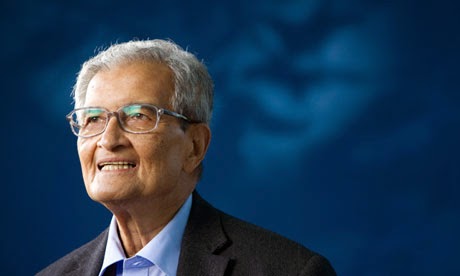
Sen disputes the thesis that aggregate food decline was the chief factor causing the famine.


The two factors which he has highlighted are, the adverse effects on the poor of the steep rise in the price due to the inflation of currency by the government and the reduction in market supplies due to speculative hoarding which also helped to boost prices further. Sen’s theory led to a controversy on whether food availability decline was not the cause for the Bengal famine. Sen gives very interesting data on how with relative rise in rice prices and the collapse of the rural labour’s entitlements of purchasing rice, there was a relative fall in the prices of a number of other commodities, like wheat flour, mustard oil, cloth, milk, fish, and haircuts. Sen identified various causes that lead to different famines and demonstrated that the decline in aggregate food availability is not the primary cause. He relates the head-count ratio of poverty to the measure of inequality of deprivation of people below the poverty line. He examined various meanings of poverty and drew attention to the incidence of absolute and relative deprivation. In the essay, several famines have been studied in the working of a general theoretical frame work from an original angle. Sen’s “Poverty and Famines”, an essay by Sen on Entitlement and Deprivation (1981) is both theoretical and applied work. The following points highlight the seven main contributions of Amartya Kumar Sen to Economics.


 0 kommentar(er)
0 kommentar(er)
